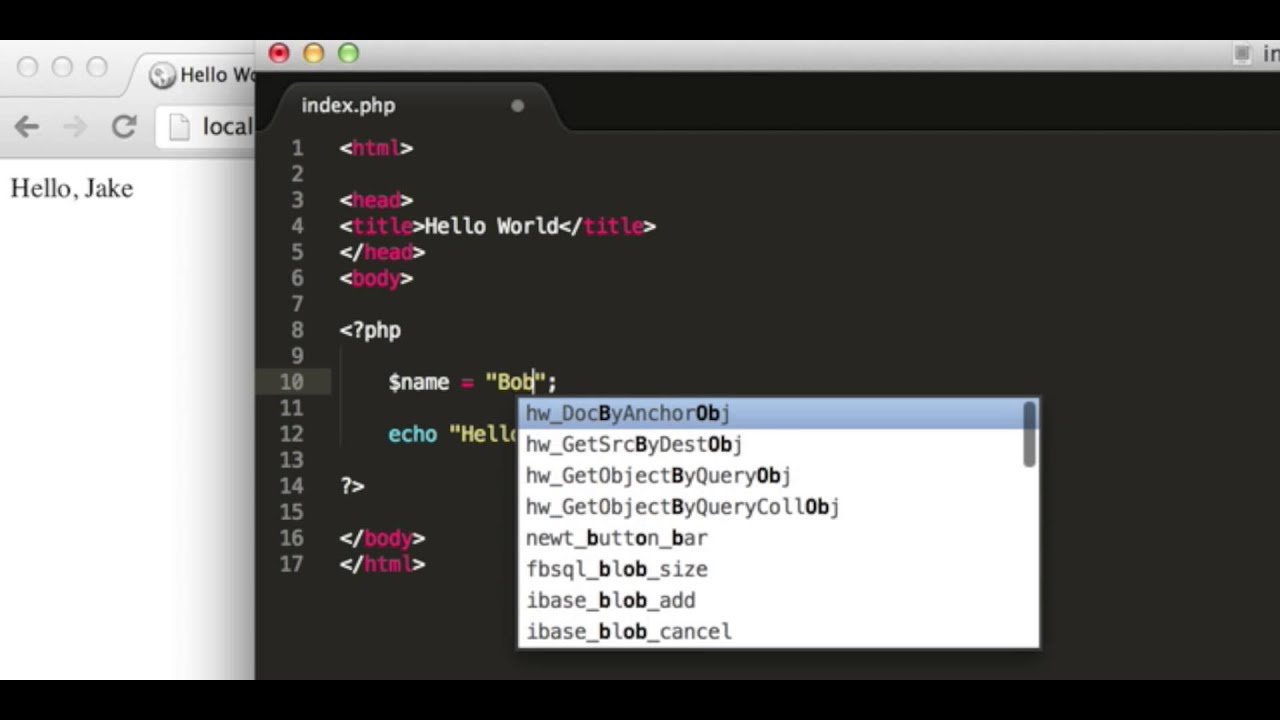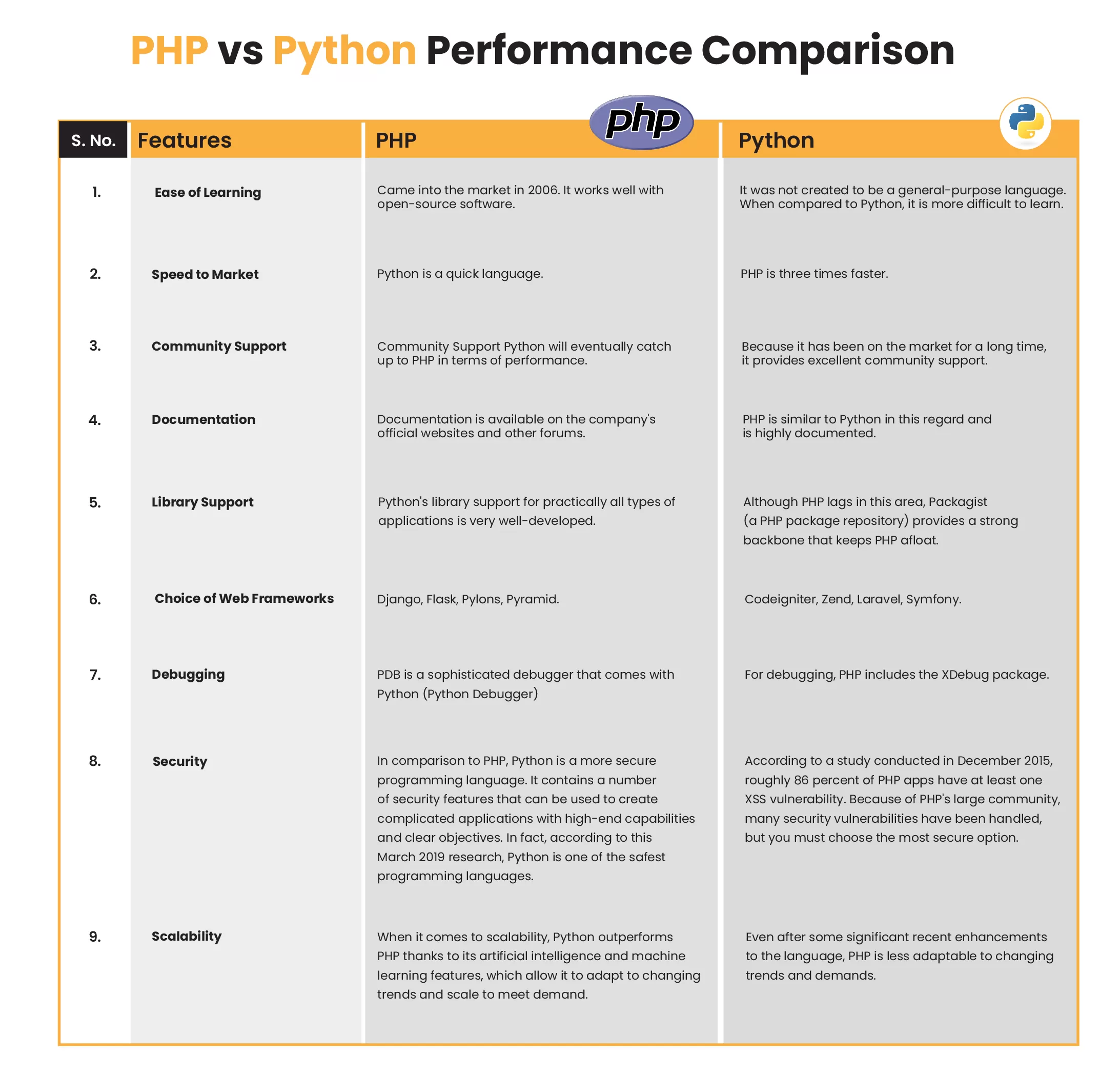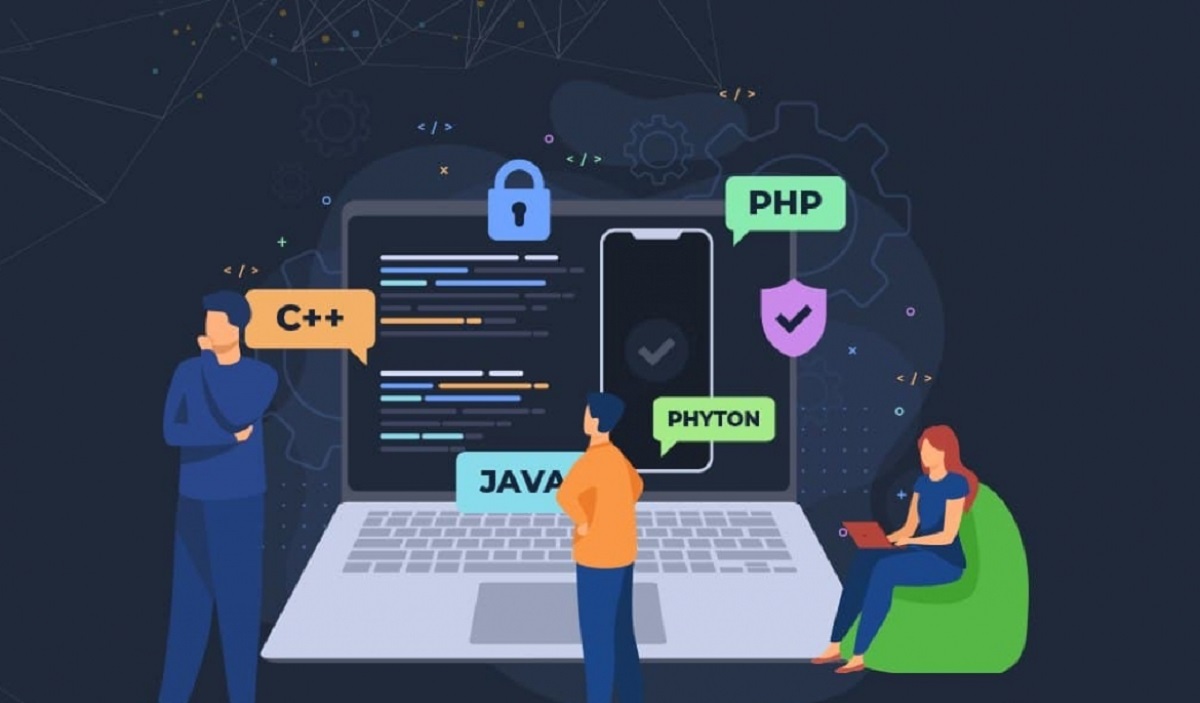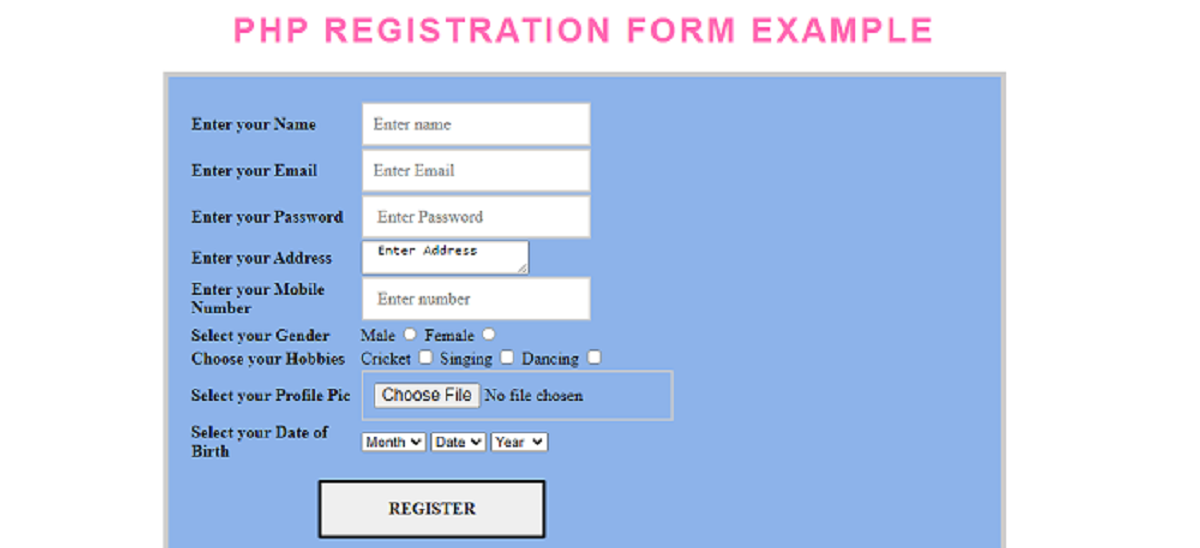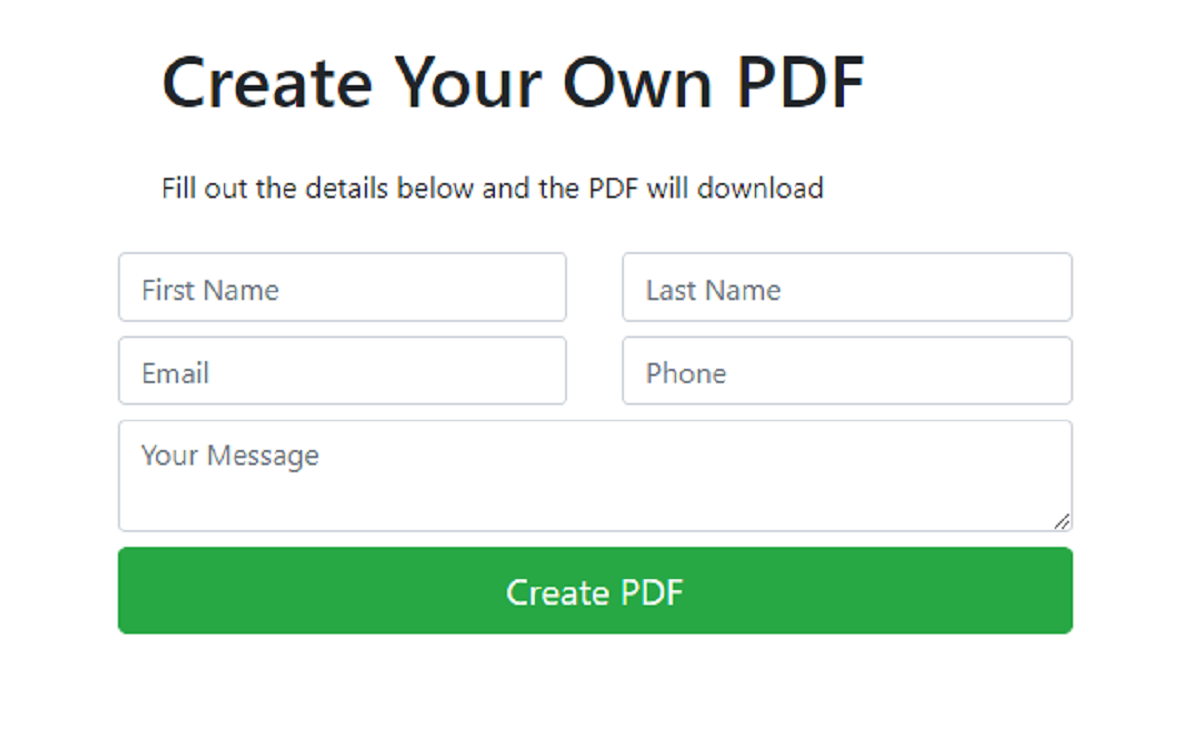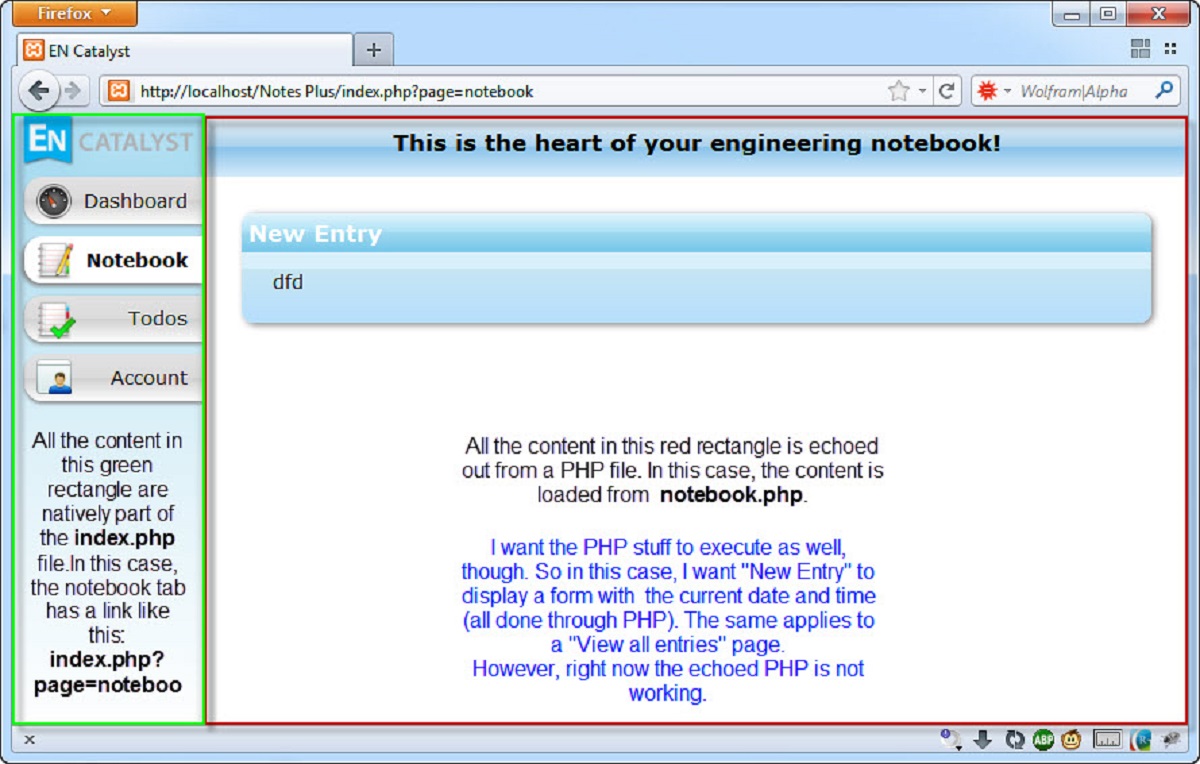Introduction
Welcome to the world of PHP, one of the most popular server-side programming languages on the web. Whether you’re a beginner or an experienced developer, learning PHP can open up a myriad of possibilities for creating dynamic web applications. In this article, we will explore the basics of PHP, from setting up your development environment to understanding crucial concepts like variables, control structures, functions, arrays, object-oriented programming, file handling, MySQL database integration, error handling, and more.
PHP, which stands for “PHP: Hypertext Preprocessor,” is widely used for web development due to its simplicity, flexibility, and extensive community support. It powers millions of websites across the internet, making it an essential skill for aspiring developers.
To get started with PHP, you’ll need a suitable development environment. You can choose from various options, such as installing a local server like XAMPP or WAMP on your computer or using online development environments like PHPFiddle or Replit.
Once your environment is set up, it’s crucial to familiarize yourself with the basic syntax and variables in PHP. Understanding the syntax rules and knowing how to declare and work with variables will form the foundation of your PHP programming skills.
Control structures, such as if-else statements and loops, are essential for making decisions and repeating actions in your PHP code. Mastering these control structures will allow you to create dynamic and interactive web applications.
Functions play a crucial role in PHP programming, as they help modularize your code and make it more manageable. Learning how to create and use functions will enhance code reusability and improve the overall efficiency of your applications.
Arrays in PHP are versatile and powerful data structures that allow you to store multiple values in a single variable. We will explore different types of arrays and learn how to manipulate them effectively.
Object-Oriented Programming (OOP) is another vital aspect of PHP development. By understanding OOP principles and concepts, you will be able to create well-structured, reusable, and scalable code.
File handling is crucial in PHP for tasks such as reading from and writing to files. We will cover file input/output operations and learn how to interact with files using PHP’s built-in functions.
Incorporating a database into your web applications is often necessary for storing and retrieving data. We will explore MySQL database integration with PHP, learning how to establish connections, perform CRUD operations, and handle data securely.
Error handling and debugging are essential skills in PHP development. We will discuss various error handling techniques, including error reporting, exception handling, and logging, to ensure the robustness and stability of your applications.
Lastly, we will touch upon some of the popular PHP frameworks and libraries that can accelerate your development process and provide additional functionality. Additionally, we will provide best practices and resources for further learning, allowing you to continuously enhance your PHP skills.
With this comprehensive guide, you will gain a solid foundation in PHP and be ready to embark on your journey to become a proficient PHP developer. So let’s dive in and unlock the immense potential of PHP!
Setting Up PHP Development Environment
Before you start coding in PHP, you need to set up a suitable development environment. Follow these steps to get your PHP environment up and running:
Step 1: Choose a Local Server: You have multiple options for setting up a local server on your computer. Two popular choices are XAMPP and WAMP. XAMPP is available for Windows, Mac, and Linux, while WAMP is specifically for Windows. These tools provide a complete package that includes PHP, Apache server, MySQL database, and other necessary components.
Step 2: Download and Install: Visit the official websites of XAMPP or WAMP and download the installer appropriate for your operating system. Run the installer and follow the on-screen instructions to complete the installation process. Make sure to choose PHP as one of the components during installation.
Step 3: Configure PHP: After installation, you may need to configure some PHP settings based on your requirements. Common configurations include changing the memory limit, increasing file upload size, or enabling certain extensions. These settings can be modified in the php.ini file, typically located in the installation directory of your local server.
Step 4: Start the Server: Once PHP is installed and configured, you can start the local server. Launch XAMPP or WAMP and start the Apache server. This will make your computer act as a web server, capable of executing PHP scripts.
Step 5: Test PHP: To ensure that PHP is working correctly, create a simple PHP file with the following content:
php
Save the file in the appropriate folder of your local server (e.g., htdocs folder in XAMPP). Open a web browser and navigate to http://localhost/phpinfo.php. If PHP is configured correctly, you will see a detailed page with information about your PHP installation.
Alternatively, you can create a separate folder in the server directory, place your PHP files there, and access them through the browser using the localhost URL.
Step 6: Choose a Text Editor or IDE: As you start coding in PHP, it is essential to choose a text editor or integrated development environment (IDE) that suits your workflow. Some popular options for PHP development include Sublime Text, Visual Studio Code, PHPStorm, and Atom. These editors provide syntax highlighting, code completion, and other useful features to enhance your coding experience.
Step 7: Start Coding: With your PHP development environment set up, you are now ready to start coding! Create a new PHP file, choose a suitable project structure, and begin writing PHP code to build your web applications.
By following these steps, you can quickly set up a PHP development environment on your computer and begin your journey into PHP programming. Remember to regularly update your local server software and stay updated with the latest PHP versions to leverage the newest features and security enhancements.
Basic Syntax and Variables
Understanding the basic syntax and variables is crucial when learning PHP. Let’s dive into the fundamentals:
Syntax: PHP code is typically enclosed within tags. An example of a simple PHP statement is:
php
This code will output the text “Hello, World!” to the browser. Note that PHP statements are terminated with a semicolon (;).
Variables: Variables are used to store and manipulate data in PHP. They follow the $ sign, followed by the variable name. Here’s an example:
php
In this example, $name is a variable storing the value “John” and $age is a variable storing the value 25. PHP is a loosely typed language, allowing variables to hold different types of data.
Data Types: PHP supports various data types, including:
- Strings: Used to store text. Enclose strings in single (”) or double (“”) quotes.
- Integers: Used to store whole numbers, positive or negative.
- Floats: Used to store decimal numbers.
- Booleans: Used to store true or false values.
- Arrays: Used to store multiple values in a single variable.
- Objects: Used to create custom data structures.
- NULL: Indicates that a variable has no value.
Output: To display data or variables, you can use the echo or print statements. Here’s an example:
php
This code will output “Welcome to PHP!” to the browser.
Concatenation: In PHP, you can concatenate (combine) strings using the dot (.) operator. Here’s an example:
php
The code will output “John Doe”.
Constants: Constants are similar to variables, but their values cannot be changed throughout the script. To define a constant, use the define() function. Here’s an example:
php
The code will output “My Website”.
Understanding the basic syntax and variables in PHP will help you lay a strong foundation for your programming journey. Experiment with different data types, practice echoing variables, and combining strings to become comfortable with PHP’s basic syntax.
Control Structures
In PHP, control structures are used to make decisions and repeat actions based on certain conditions. Understanding control structures is essential for creating dynamic and interactive web applications. Let’s explore some of the commonly used control structures:
If-Else Statements: If-else statements allow you to execute different blocks of code depending on a particular condition. The syntax for an if-else statement is:
php
For example:
php
= 18) {
echo “You are eligible to vote!”;
} else {
echo “You are not old enough to vote.”;
}
?>
This code will output “You are eligible to vote!” if the $age variable is 18 or older, and “You are not old enough to vote.” if it is younger than 18.
Switch Statements: Switch statements allow you to perform different actions based on different values. The syntax for a switch statement is:
php
For example:
php
This code will output “Today is the start of the week.” if the $day variable is “Monday”, “It’s finally Friday!” if it is “Friday”, and “It’s an ordinary day.” for any other day.
Loops: Loops allow you to iterate through a block of code multiple times. PHP provides different types of loops, including:
- For Loop: Executes a block of code a specified number of times. The syntax for a for loop is:
php
For example:
php
“;
}
?>
This code will output the values of $i from 0 to 4.
- While Loop: Executes a block of code as long as a condition is true. The syntax for a while loop is:
php
For example:
php
“;
$i++;
}
?>
This code will output the values of $i from 0 to 4.
- Foreach Loop: Iterates over each element in an array. The syntax for a foreach loop is:
php
For example:
php
“;
}
?>
This code will output each fruit in the $fruits array.
Control structures are essential for creating dynamic and interactive web applications. By mastering if-else statements, switch statements, and loops, you can create logic that responds to different conditions and efficiently repeats actions in your PHP code.
Functions
In PHP, functions are reusable blocks of code that perform specific tasks. They help you organize your code, improve code reusability, and make it more manageable. Let’s explore how to create and use functions in PHP:
Defining and Calling Functions: To define a function in PHP, use the function keyword followed by the function name and a pair of parentheses. Any parameters the function accepts are specified within the parentheses. Here’s an example:
php
This code defines a function named greet() that accepts one parameter, $name. It then calls the function with the argument "John", resulting in the output “Hello, John!”.
Return Values: Functions can also return values using the return keyword. Here’s an example:
php
This code defines a function named add() that accepts two parameters, $num1 and $num2. It calculates the sum of the numbers and returns it. The returned value is then stored in the variable $result and displayed, resulting in the output “8”.
Default Parameters: PHP functions can have default parameter values. If a value is not provided for a parameter when calling the function, the default value will be used. Here’s an example:
php
“;
echo $result2;
?>
This code defines a function named multiply() that accepts two parameters, $num1 and $num2, with a default value of 2. When calling the function with only one argument (i.e., multiply(5)), the default value of 2 is used, resulting in the output “10”. When calling the function with two arguments (i.e., multiply(5, 3)), the provided values are used, resulting in the output “15”.
Variable Scope: PHP has different types of variable scope: local, global, and static. Local variables are declared within a function and only accessible within that function. Global variables are declared outside of any function and can be accessed throughout the program. Static variables retain their value between multiple function calls. Understanding variable scope is essential to avoid conflicts and ensure proper variable usage in your functions.
Functions play a vital role in PHP programming. By organizing code into functions, you can create reusable and modular components that enhance code clarity and maintainability. Explore a variety of built-in PHP functions and experiment with creating your own to harness the full power of functions in PHP.
Arrays
In PHP, arrays are versatile data structures that allow you to store multiple values in a single variable. They are incredibly useful for managing collections of data and performing various operations on them. Let’s dive into arrays and explore their functionalities in PHP:
Creating Arrays: In PHP, arrays can be created using the array() construct or the shorthand square bracket syntax []. Here are examples of both:
php
In these examples, $fruits and $colors are arrays that store multiple values.
Accessing Array Elements: Array elements can be accessed using their respective index values, starting from 0. Here’s an example:
php
This code will output “Banana”, as 1 is the index of the second element in the $fruits array.
Adding and Removing Elements: Arrays in PHP are dynamic, allowing you to add and remove elements at runtime. To add elements, you can use the [] or array_push() function. Here’s an example:
php
The $fruits array now contains “Apple”, “Banana”, “Orange”, and “Grapes”.
To remove elements from an array, you can use the unset() function. Here’s an example:
php
The $fruits array will now contain “Apple”, “Orange”, and “Grapes”, with the “Banana” element removed.
Array Functions: PHP provides a wide range of array functions to manipulate and process arrays. Some commonly used functions include:
- count(): Returns the number of elements in an array.
- sort(): Sorts the elements of an array in ascending order.
- array_merge(): Merges two or more arrays into a single array.
- array_search(): Searches an array for a given value and returns the corresponding key.
- array_reverse(): Reverses the order of elements in an array.
These functions, along with many others, provide powerful capabilities for working with arrays in PHP.
Multi-dimensional Arrays: PHP also supports multi-dimensional arrays, allowing you to create arrays with multiple levels of nesting. Here’s an example:
php
In this example, $employees is a multi-dimensional array that stores information about different employees.
Arrays are essential data structures in PHP for managing and processing collections of data. Experiment with different array operations and explore the plethora of array functions available in PHP to take full advantage of the versatility and power of arrays.
Object-Oriented Programming (OOP)
Object-Oriented Programming (OOP) is a programming paradigm that allows you to structure your code using objects, which are instances of classes. OOP in PHP provides a powerful and flexible way to organize and build complex applications. Let’s delve into the key concepts and features of OOP in PHP:
Classes and Objects: In OOP, a class is a blueprint for creating objects. It defines the properties (attributes) and functions (methods) that an object of that class can have. To create an object from a class, you instantiate it using the new keyword. Here’s an example:
php
brand = “Toyota”;
$myCar->color = “Red”;
$myCar->startEngine();
$myCar->drive();
?>
In this example, the Car class has brand and color properties and startEngine() and drive() methods. We create an object $myCar of the Car class, set its properties, and call its methods.
Encapsulation and Data Hiding: OOP allows you to encapsulate data within an object and control its accessibility. You can use visibility modifiers, such as public, private, and protected, to regulate access to properties and methods. For example:
php
balance += $amount;
}
public function getBalance() {
return $this->balance;
}
}
$account = new BankAccount();
$account->deposit(100);
echo $account->getBalance();
?>
In this example, the balance property is declared as private, meaning it can only be accessed within the BankAccount class itself. The deposit() method is used to modify the $balance, and the getBalance() method is used to retrieve it.
Inheritance: Inheritance allows you to create a class that inherits properties and methods from another class. The child class (subclass) inherits all the characteristics of the parent class (superclass) while having the ability to define its unique properties and methods. Here’s an example:
php
name = “Max”;
$myDog->eat();
$myDog->bark();
?>
In this example, the Dog class inherits the $name property and eat() method from the Animal class. It also defines its unique method bark(). We create an object $myDog of the Dog class and utilize the inherited and defined methods.
Polymorphism: Polymorphism allows objects of different classes to be treated as objects of a common superclass. It enables you to use a single interface to represent different classes. Here’s an example:
php
side = $side;
}
public function calculateArea() {
return $this->side * $this->side;
}
}
class Circle implements Shape {
private $radius;
public function __construct($radius) {
$this->radius = $radius;
}
public function calculateArea() {
return 3.14 * $this->radius * $this->radius;
}
}
$square = new Square(5);
$circle = new Circle(3);
echo $square->calculateArea(); // Output: 25
echo $circle->calculateArea(); // Output: 28.26
?>
In this example, the Shape interface defines the calculateArea() method. Both the Square and Circle classes implement this interface and provide their own implementation of the method. We create objects of both classes and call the calculateArea() method, which gives us the area of the respective shape.
Object-Oriented Programming provides a structured and modular approach to programming in PHP. By utilizing classes, objects, inheritance, encapsulation, and polymorphism, you can write cleaner, more organized, and reusable code.
File Handling
File handling is an essential aspect of web development that involves reading from and writing to files. It allows you to store and retrieve data, interact with external resources, and persist information. In PHP, several functions and techniques make file handling straightforward and efficient. Let’s explore the fundamentals of file handling in PHP:
Opening and Closing Files: Before working with a file in PHP, you need to open it using the fopen() function. This function takes two parameters: the filename or path and the access mode (read, write, append, etc.). Here’s an example:
php
In this example, the file “file.txt” is opened in read mode (“r”). Once you are done with file operations, it’s important to close the file using the fclose() function to free up system resources.
Reading from Files: PHP provides several functions for reading content from files. The most commonly used function is fread(), which reads a specified number of bytes from a file. Here’s an example:
php
In this example, the code opens the “file.txt” file, reads its entire content using fread(), and then echoes it to the browser. The filesize() function is used to determine the size of the file.
Writing to Files: To write data to a file, you can use the fwrite() function. Here’s an example of appending data to an existing file:
php
In this example, the “file.txt” file is opened in append mode (“a”). The fwrite() function is used to write the specified data to the file. The new data is added to the end of the existing content. The file is then closed, and a success message is displayed.
Deleting Files: PHP allows you to delete files using the unlink() function. Here’s an example:
php
In this example, the code checks if the file “file.txt” exists using file_exists(). If it does, the file is deleted using unlink(), and a success message is displayed.
File Permissions: File permissions control the access rights to a file. In PHP, you can set permissions using the chmod() function. Here’s an example:
php
In this example, the code checks if the file “file.txt” exists. If it does, the chmod() function is used to set the file permissions to 0644 (read and write for the owner, read for others). A success message is displayed to indicate that the permissions have been updated.
File handling is a crucial aspect of web development, enabling you to work with external files and manage data effectively. Familiarize yourself with the file handling functions and techniques available in PHP to harness their power in your applications.
MySQL Database Integration
Integrating MySQL database with PHP is a key aspect of web development, as databases provide a robust solution for storing, managing, and retrieving data. In PHP, you can seamlessly connect to a MySQL database and perform various operations, from establishing database connections to executing queries. Let’s explore the fundamentals of MySQL database integration in PHP:
Establishing Database Connection: To start working with a MySQL database, you need to establish a connection using the mysqli_connect() function. Here’s an example:
php
In this example, the code establishes a connection to a local MySQL database. You need to replace the values of $db_host, $db_username, $db_password, and $db_name with your own database credentials. If the connection is successful, a success message is echoed. The mysqli_close() function is used to close the database connection at the end.
Executing SQL Queries: Once the database connection is established, you can execute SQL queries using the mysqli_query() function. Here’s an example:
php
0) {
while ($row = mysqli_fetch_assoc($result)) {
echo “Name: ” . $row[“name”] . “, Email: ” . $row[“email”] . “
“;
}
} else {
echo “No records found.”;
}
mysqli_free_result($result);
?>
In this example, an SQL query is executed to fetch data from a table named “users”. The mysqli_num_rows() function checks if there are any rows returned by the query. If there are, a while loop is used to iterate through the result set using mysqli_fetch_assoc(). The fetched data is then displayed, and the mysqli_free_result() function is used to free up memory associated with the result set.
Preventing SQL Injection: It is crucial to protect your application from SQL injection attacks. PHP provides prepared statements to mitigate this security risk. Here’s an example:
php
In this example, a prepared statement is used to insert data into the “users” table. The mysqli_prepare() function prepares the SQL statement with placeholders (?, ?) for data binding. The mysqli_stmt_bind_param() function binds the actual data to the placeholders. Finally, the mysqli_stmt_execute() function executes the prepared statement. If successful, a success message is displayed. The mysqli_stmt_close() function is used to close the prepared statement.
MySQL database integration is crucial for managing and manipulating data in web applications. Familiarize yourself with the functions and techniques available in PHP for connecting to MySQL databases, executing queries, and implementing security measures to ensure the integrity and protection of your database operations.
Error Handling and Debugging
Error handling and debugging are critical aspects of PHP development. They help identify and resolve issues in your code, ensuring that your applications run smoothly and error-free. PHP provides several mechanisms and techniques for effective error handling and debugging. Let’s explore them in detail:
Error Reporting: PHP allows you to control the level of error reporting and error display using the error_reporting directive in the PHP configuration file (php.ini) or by using the error_reporting() function within your code. Setting error reporting to the highest level, such as E_ALL, helps identify and report all types of errors, including notices, warnings, and fatal errors.
Displaying Errors: During development, it’s beneficial to display errors and warnings directly on the screen. This can be enabled by setting the display_errors directive to On in the PHP configuration file or by adding ini_set('display_errors', 1); at the beginning of your PHP script. This allows you to identify and fix errors more efficiently.
Error Handling: PHP provides various error handling mechanisms to gracefully handle errors and exceptions. Here are a few methods:
- Try-Catch Blocks: Use
try-catchblocks to catch and handle exceptions that may occur during the execution of your code. This helps prevent application crashes and provides an opportunity to handle errors gracefully. Here’s an example:
php
getMessage();
}
?>
- Error Logging: PHP allows you to log errors and exceptions to a file rather than displaying them on the screen. This is particularly useful in production environments where you want to hide sensitive error information from users. You can configure PHP to log errors by setting the
error_logdirective in the PHP configuration file.
Debugging Techniques: To diagnose and fix issues in your code, PHP provides several debugging techniques:
- Print Statements: Utilize
echo,print_r(), orvar_dump()statements to display the values of variables or specific messages at different points in your code. This helps you understand the flow of your program and identify any unexpected behavior. - Error Reporting Tools: Take advantage of tools like
error_log()or third-party logging and error reporting services to track and gather information about errors occurring in your application. These tools can provide valuable insights into the root cause of the issue. - Step-by-Step Debugging: Utilize a development environment or IDE with built-in debugging capabilities to set breakpoints, step through code, and examine variables and their values at runtime. This allows you to identify and fix issues more efficiently.
By effectively handling errors and implementing robust debugging techniques, you can ensure that your PHP applications are stable, secure, and performant. Regularly review and refine your error handling and debugging strategies to continuously enhance the quality of your code.
Common PHP Frameworks and Libraries
PHP frameworks and libraries offer developers a consolidated set of tools, components, and functionalities to accelerate the development process and build robust, scalable, and maintainable web applications. Let’s explore some of the most widely used PHP frameworks and libraries:
1. Laravel: Laravel is a highly popular PHP framework known for its elegant syntax, expressive syntax, and comprehensive set of features. It follows the MVC (Model-View-Controller) architectural pattern and provides features like routing, ORM (Object-Relational Mapping), authentication, and caching, making it efficient for building large-scale applications.
2. Symfony: Symfony is a flexible PHP framework that emphasizes reusable components and best practices. It offers a rich set of features, including a powerful routing system, form handling, security tools, and robust testing capabilities. Symfony allows developers to build highly customizable and maintainable applications.
3. Codeigniter: Codeigniter is a lightweight PHP framework known for its simplicity and user-friendly documentation. It provides a small footprint, yet offers a range of features, including database abstraction, form validation, session management, and caching. Codeigniter is particularly suitable for small to medium-sized projects.
4. Yii: Yii is a high-performance PHP framework that promotes rapid development and follows the MVC architecture. It offers strong caching support, security features, and integration with third-party libraries. Yii is well-suited for developing large-scale applications with strict performance requirements.
5. Composer: Composer is a dependency management tool for PHP. It allows you to manage libraries and their versions efficiently, automatically handles dependencies, and simplifies the integration of third-party code into your projects. Composer is widely used in the PHP ecosystem and is an essential tool for modern PHP development.
6. PHPUnit: PHPUnit is a unit testing framework for PHP. It provides a robust set of features for writing and running automated tests, ensuring code quality and preventing regression bugs. By writing unit tests, developers can validate the correctness of their code and catch issues early in the development cycle.
7. Guzzle: Guzzle is a PHP HTTP client that simplifies the process of sending HTTP requests and interacting with web services. It provides a convenient API for making GET, POST, PUT, and DELETE requests, handling headers and authentication, and processing response data. Guzzle is widely used for integration with RESTful APIs or consuming web services.
These are just a few examples of the multitude of PHP frameworks and libraries available. The choice of framework or library depends on the nature of your project, development preferences, and specific requirements. Investing time to learn and utilize these tools can significantly improve the development process, enhance productivity, and build robust PHP applications.
Best Practices and Resources for Learning PHP
PHP is continuously evolving, and it’s essential to follow best practices to write clean, maintainable, and secure code. Here are some best practices to keep in mind when working with PHP:
- Use Descriptive Variable and Function Names: Choose meaningful and descriptive names for your variables, functions, and classes to enhance code readability.
- Keep Code Modular and DRY: Break your code into smaller, reusable modules to promote code reusability and reduce redundancy. Don’t Repeat Yourself (DRY) principle can help eliminate code duplication.
- Sanitize and Validate User Input: Always sanitize and validate user input to prevent security vulnerabilities like SQL injection and Cross-Site Scripting (XSS) attacks.
- Follow the Principle of Least Privilege: Grant the minimum necessary permissions to your PHP scripts and database users to minimize security risks.
- Handle Errors and Exceptions: Implement proper error handling and logging to catch and handle errors elegantly, ensuring smooth execution of your PHP applications.
- Secure Your Application: Protect sensitive data, use secure authentication mechanisms, and apply appropriate input/output filtering to safeguard your PHP applications.
Resources for learning PHP:
- PHP.net: The official PHP website (php.net) provides extensive documentation, language references, user-contributed notes, and a dedicated manual that covers all aspects of PHP.
- Tutorials and Online Courses: Numerous online platforms offer PHP tutorials and courses for learners of all levels. Websites like Udemy, Coursera, and Codecademy provide comprehensive PHP learning resources.
- Community Forums and Blogs: Participate in PHP-focused forums like PHP.net’s official forum, Stack Overflow, and Reddit’s r/PHP to get answers to your questions, share knowledge, and stay updated with the latest developments.
- Books: Several PHP books, such as “PHP and MySQL Web Development” by Welling and Thomson, “Modern PHP: New Features and Good Practices” by Josh Lockhart, and “PHP Objects, Patterns, and Practice” by Matt Zandstra, offer in-depth insights into PHP development.
- PHP Conferences and Meetups: Attend PHP conferences and local meetups to network with experienced developers, gain knowledge through presentations and workshops, and stay connected with the PHP community.
By adopting best practices and utilizing reliable learning resources, you can enhance your PHP skills, stay updated with the latest PHP developments, and develop robust and secure PHP applications.







